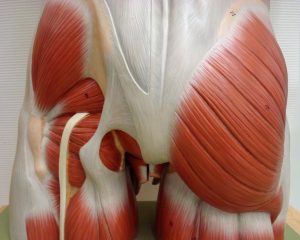As we have a special interest area in endurance sports and running we see a lot of people who have pain in their buttock that can be quite debilitating. It seems the classic case is the middle aged man with pain in their calf and the poor female runners suffering from pain in their butt! The condition can be very stubborn and frustrating for the athlete. Typically the pain occurs near the lateral side of the hip (closer to the outside of the body) and begins soon after running. There are several different conditions that occur in this area, but fortunately with the right management, good results are usually achieved.

The problem usually comes from a muscle imbalance in the pelvis and upper leg region. The physio really needs to conduct a thorough assessment of this area to discover which muscles are tight and which muscles are weak and structure a treatment program accordingly. The pain can often radiate down the leg, especially if the sciatic nerve is pinched – as you can see on the left side above the sciatic nerve (The yellow rope like structure) exits through a ‘congested’ space and can easily be impinged if they are tight or aggravated.
Some other common tips for dealing with glue pain:
– Avoid direct pressure on the side of the hip – e.g. sleeping on your side on an overly firm mattress.
– Doing some glue ‘primer’ or activation exercises before a run and even stopping during a run to switch the gluten on
– Try to run with some activation in the glutes – imagine you are holding a bit of paper in between your buttock cheeks
– Work on your run technique – incorporation some trail running or climbing is a great way to strengthen glutes
and finally
– Do what your physio tells you!


